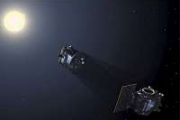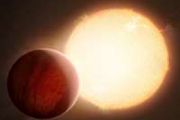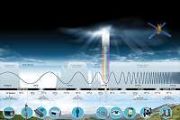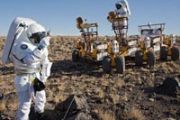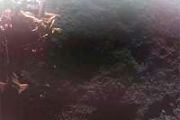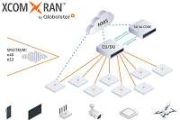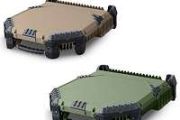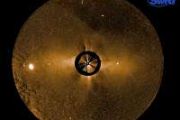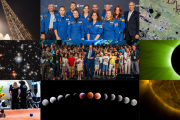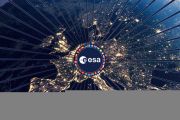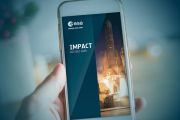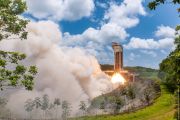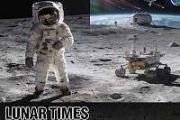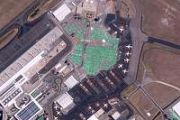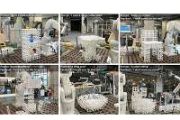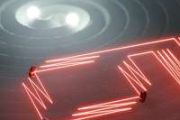
Copernical Team
Norway hosts mainland Europe's first orbital vehicle launch
 A German start-up hopes to conduct Monday a test flight of its Spectrum rocket from Norway's Andoya Spaceport, a first for Europe which is keen to maintain its access to space.
Scheduled to take place sometime between 12:30 pm and 3:30 pm (1130 and 1430 GMT), the launch from the Arctic space centre will be the first flight of an orbital launch vehicle from the European continent, excluding R
A German start-up hopes to conduct Monday a test flight of its Spectrum rocket from Norway's Andoya Spaceport, a first for Europe which is keen to maintain its access to space.
Scheduled to take place sometime between 12:30 pm and 3:30 pm (1130 and 1430 GMT), the launch from the Arctic space centre will be the first flight of an orbital launch vehicle from the European continent, excluding R NASA's EZIE Satellites Confirm Operational Status in Early Mission Phase
 NASA has confirmed that all three satellites of the Electrojet Zeeman Imaging Explorer (EZIE) mission are functioning well and communicating with mission control as anticipated.
The trio of spacecraft was deployed into orbit via a SpaceX Falcon 9 rocket, which lifted off from Vandenberg Air Force Base on March 15 EDT (March 14 PDT). Following this successful launch, engineers and mission s
NASA has confirmed that all three satellites of the Electrojet Zeeman Imaging Explorer (EZIE) mission are functioning well and communicating with mission control as anticipated.
The trio of spacecraft was deployed into orbit via a SpaceX Falcon 9 rocket, which lifted off from Vandenberg Air Force Base on March 15 EDT (March 14 PDT). Following this successful launch, engineers and mission s Parker Solar Probe Continues Record Speed and Distance Solar Flybys
 NASA's Parker Solar Probe is currently engaged in its 23rd solar science campaign, heading toward a Sun encounter on Saturday, March 22, that will once again bring it within a mere 3.8 million miles (6.1 million kilometers) of the solar surface. This approach matches the spacecraft's previous record for the closest distance to the Sun, achieved during its December 24 flyby.
During this lat
NASA's Parker Solar Probe is currently engaged in its 23rd solar science campaign, heading toward a Sun encounter on Saturday, March 22, that will once again bring it within a mere 3.8 million miles (6.1 million kilometers) of the solar surface. This approach matches the spacecraft's previous record for the closest distance to the Sun, achieved during its December 24 flyby.
During this lat NASA's SPHEREx Space Telescope Begins Skyward Mission After Shedding Protective Shield
 NASA's SPHEREx mission, newly launched into low Earth orbit on March 11, has taken a major step toward beginning its cosmic survey by discarding its dust cover. On March 18, mission controllers successfully directed the observatory to jettison the shield that safeguarded the telescope's aperture from particles and moisture.
This crucial component, which measured roughly 25 inches by 16 inc
NASA's SPHEREx mission, newly launched into low Earth orbit on March 11, has taken a major step toward beginning its cosmic survey by discarding its dust cover. On March 18, mission controllers successfully directed the observatory to jettison the shield that safeguarded the telescope's aperture from particles and moisture.
This crucial component, which measured roughly 25 inches by 16 inc Peak solar activity brings increased focus to ionosphere data for satellite safety
 Following recent confirmation from NASA and NOAA that Solar Cycle 25 has reached its apex, attention has turned to mitigating the risks posed by heightened solar activity. The increased sunspot count, a hallmark of solar maximum, has already led to notable geomagnetic disturbances, including the significant Mother's Day Storm in May 2024 and another major storm five months later. These powerful
Following recent confirmation from NASA and NOAA that Solar Cycle 25 has reached its apex, attention has turned to mitigating the risks posed by heightened solar activity. The increased sunspot count, a hallmark of solar maximum, has already led to notable geomagnetic disturbances, including the significant Mother's Day Storm in May 2024 and another major storm five months later. These powerful Chang'e-6 samples pinpoint moon's oldest crater to 4.25 billion years ago
 Chinese scientists have precisely dated the moon's oldest and largest impact feature, the South Pole-Aitken (SPA) basin, to 4.25 billion years ago using lunar samples returned by the Chang'e-6 mission. This result offers critical insights into the moon's formative history and the early development of the solar system.
A research team led by Chen Yi from the Institute of Geology and Geophys
Chinese scientists have precisely dated the moon's oldest and largest impact feature, the South Pole-Aitken (SPA) basin, to 4.25 billion years ago using lunar samples returned by the Chang'e-6 mission. This result offers critical insights into the moon's formative history and the early development of the solar system.
A research team led by Chen Yi from the Institute of Geology and Geophys Shocking Spherules!
 Last week the Perseverance Science Team were astonished by a strange rock comprised of hundreds of millimeter-sized spheres... and the team are now working hard to understand their origin.
It has now been two weeks since Perseverance arrived at Broom Point, situated at the lower slopes of the Witch Hazel Hill area, on the Jezero crater rim. Here, a series of light- and dark- toned bands were vi
Last week the Perseverance Science Team were astonished by a strange rock comprised of hundreds of millimeter-sized spheres... and the team are now working hard to understand their origin.
It has now been two weeks since Perseverance arrived at Broom Point, situated at the lower slopes of the Witch Hazel Hill area, on the Jezero crater rim. Here, a series of light- and dark- toned bands were vi Webb unmasks true nature of the Cosmic Tornado

The NASA/ESA/CSA James Webb Space Telescope has captured a beautiful juxtaposition of the nearby protostellar outflow known as Herbig-Haro 49/50 with a perfectly positioned, more distant spiral galaxy. Due to the close proximity of this Herbig-Haro object to Earth, this new composite infrared image of the outflow from a young star allows researchers to examine details on small spatial scales like never before. With Webb, we can better understand how the jet activity associated with the formation of young stars can affect the environment surrounding them.
Spire debuts AI weather forecasting models built with NVIDIA Omniverse Earth2 tech
 Spire Global, Inc. (NYSE: SPIR) has introduced two state-of-the-art artificial intelligence weather models, AI-WX and AI-S2S, which utilize the NVIDIA Omniverse Blueprint for Earth-2 platform. These advanced systems are powered by Spire's exclusive satellite-derived data and offer medium-range and sub-seasonal forecasts designed to support sectors like energy, utilities, and commodities with hig
Spire Global, Inc. (NYSE: SPIR) has introduced two state-of-the-art artificial intelligence weather models, AI-WX and AI-S2S, which utilize the NVIDIA Omniverse Blueprint for Earth-2 platform. These advanced systems are powered by Spire's exclusive satellite-derived data and offer medium-range and sub-seasonal forecasts designed to support sectors like energy, utilities, and commodities with hig Pixxel satellites deliver groundbreaking hyperspectral imaging milestone
 Pixxel, a leader in hyperspectral imaging technology, has announced a major advancement in Earth observation as its trio of Firefly satellites has captured and transmitted their inaugural 'First Light' imagery. These images set a new benchmark, marking the highest-resolution hyperspectral images ever acquired from space.
Following a flawless commissioning process, all three satellites are
Pixxel, a leader in hyperspectral imaging technology, has announced a major advancement in Earth observation as its trio of Firefly satellites has captured and transmitted their inaugural 'First Light' imagery. These images set a new benchmark, marking the highest-resolution hyperspectral images ever acquired from space.
Following a flawless commissioning process, all three satellites are 



